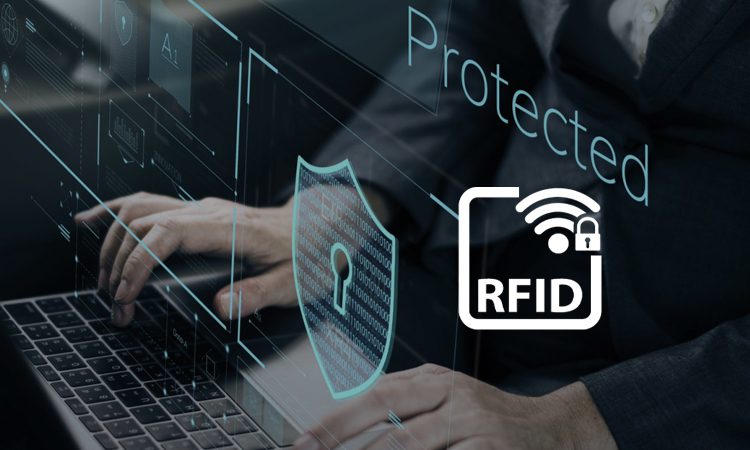Radio Frequency Identification (RFID) is a wireless technology that has been in use for several decades. It uses radio waves to identify and track objects. Over the years, RFID has evolved and today it is used in a wide range of applications, from inventory management to access control. However, with the advent of the Internet of Things (IoT), RFID has taken on a new role as a key enabler of the IoT. In this blog post, we will explore the emerging trends in RFID, from smart packaging to the IoT.
Smart Packaging
Smart packaging is a type of packaging that uses technology to provide additional functionality beyond basic containment and protection. RFID is a key technology that is used in smart packaging to enable features such as tracking and authentication. For example, RFID can be used to track the location and temperature of a package during shipment, or to authenticate that a product is genuine.
One of the emerging trends in smart packaging is the use of RFID tags that are integrated into packaging materials. These tags can be printed directly onto the packaging using conductive ink, which allows for a more seamless integration with the packaging design. This technology is already being used in the food industry, where RFID tags are being used to track the temperature of food during shipment.
Asset Tracking
Asset tracking is the process of monitoring the location and status of physical assets, such as equipment or inventory. RFID is a popular technology for asset tracking, as it allows for real-time monitoring and can be used in a wide range of environments. One of the emerging trends in asset tracking is the use of RFID in combination with other technologies, such as GPS and sensors.
For example, GPS can be used to track the location of a vehicle or piece of equipment, while RFID can be used to track the individual components of that asset. Sensors can be used to monitor the condition of the asset, such as temperature or vibration. By combining these technologies, asset tracking systems can provide a comprehensive view of the location and condition of assets in real time.
Retail
RFID has been used in the retail industry for several years, primarily for inventory management. However, with the advent of the IoT, RFID is taking on a new role in retail as a key enabler of omnichannel retailing. Omnichannel retailing is the integration of physical stores, online stores, and mobile shopping into a single, seamless customer experience.
RFID is a critical technology for omnichannel retailing, as it allows retailers to track inventory across multiple channels in real time. This means that retailers can provide customers with accurate information about product availability and can fulfill orders from any location. RFID can also be used to provide customers with a personalized shopping experience, such as recommending products based on their past purchases.
Industrial IoT
Industrial IoT (IIoT) is the use of IoT technology in industrial settings, such as factories and warehouses. RFID is a key technology for IIoT, as it allows for real-time monitoring of inventory and equipment. One of the emerging trends in the IIoT is the use of RFID in combination with other technologies, such as machine learning and analytics.
For example, RFID can be used to track the location and status of equipment in a factory, while machine learning can be used to analyze the data to identify patterns and predict maintenance needs. This allows for proactive maintenance, which can help to prevent equipment failures and downtime.
Another emerging trend in the IIoT is the use of blockchain technology in combination with RFID to improve supply chain transparency and traceability. Blockchain is a distributed ledger technology that allows for secure and transparent record-keeping. By using blockchain technology in combination with RFID, companies can create a tamper-proof record of the movement of goods through the supply chain. This can help to improve supply chain efficiency and reduce the risk of fraud and counterfeiting.
Healthcare
RFID is also being used in the healthcare industry to improve patient care and safety. One of the emerging trends in healthcare is the use of RFID for patient tracking and medication management. RFID tags can be attached to patient wristbands, which allows healthcare providers to track the patient’s location and monitor their vital signs. RFID can also be used to track medication usage and ensure that patients receive the correct dosage at the correct time.
RFID is also being used in the healthcare industry for asset tracking, such as tracking the location and usage of medical equipment. This can help to improve efficiency and reduce the risk of equipment loss or theft.
Challenges
While RFID has many benefits, there are also challenges associated with its use. One of the challenges is the cost of RFID tags, which can be a barrier to adoption for some companies. However, as the technology continues to evolve and become more widespread, the cost of RFID tags is likely to decrease.
In addition to the challenges of interoperability and privacy, another consideration is the use of near-field communication (NFC) technology in smartphones. So, what is nfc in android? Well, it is a wireless communication protocol that operates at a shorter range than RFID and is commonly used in Android smartphones for secure and convenient data transfer.
NFC can be used for a variety of applications, such as mobile payments and data sharing between devices. However, the use of NFC also raises security concerns similar to those of RFID. Encryption and access control mechanisms can be used to address these concerns and ensure the safe and secure use of NFC technology in Android devices.
Conclusion
RFID is a versatile technology that is being used in a wide range of applications, from smart packaging to the IoT. As technology continues to evolve, it is likely to become even more widespread and play an increasingly important role in a variety of industries.
However, there are also challenges associated with RFID, such as cost, interoperability, and privacy and security concerns. By addressing these challenges, RFID has the potential to continue to revolutionize the way we track and manage physical objects in the years to come.
Michael C Vang is a passionate blogger. He has been blogging since 2013 on a variety of topics. He is committed to creating informative and engaging content that helps readers learn more about everything.



